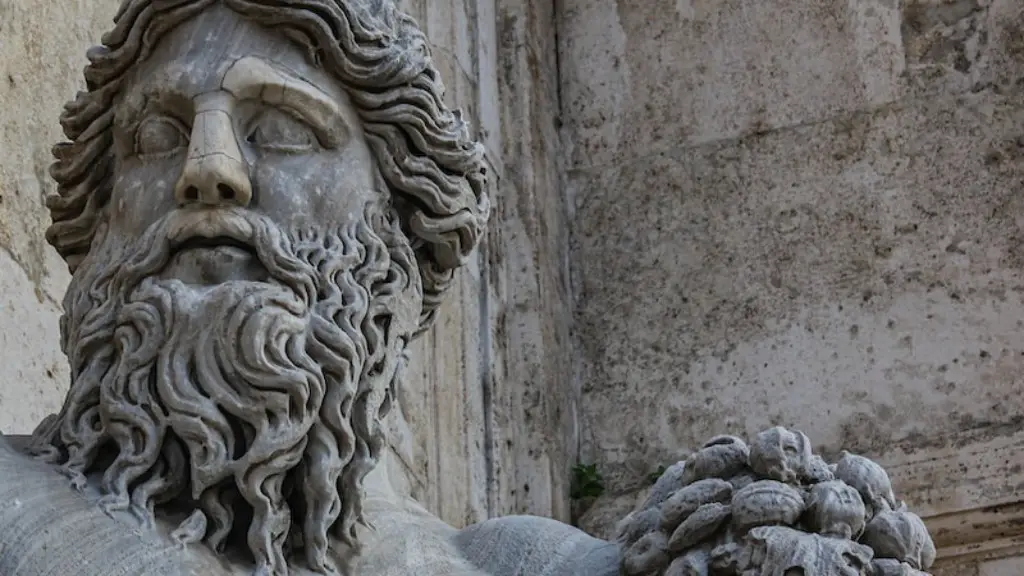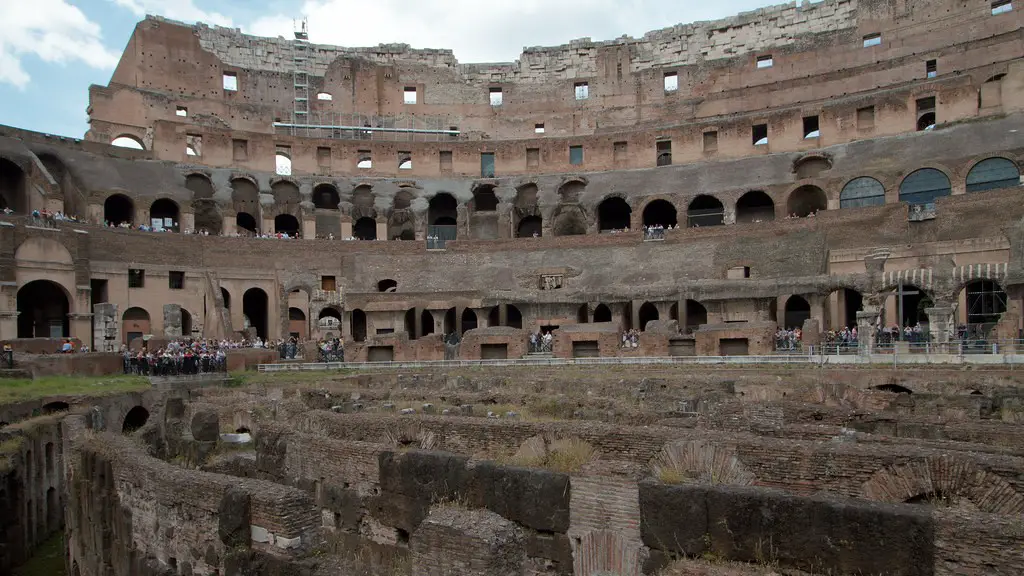Art was undeniably important for the Ancient Romans. For them, art was not only a beautiful form of expression, but also an important psychological and political tool. The Ancient Romans had an advanced culture, and due to it, they quickly became aware of the power of art. It allowed them to express their thoughts, feelings, and ideas and give meaning to the gods and goddesses they worshipped. Furthermore, art was used as a way to honour the gods, emperors, and even the common man.
The Ancient Romans valued art not only for its beauty, but also for its potential to reach the heart of their people. Consequently, they used sculptures, carvings, and mosaics to convey messages and express their political ambitions. Such forms of art were placed in public areas, including town squares and gardens, to reach the widest possible audience. Furthermore, they also used art to tell the stories of the gods and goddesses they worshipped, immortalising their tales in stone, and to show the importance of their gods.
The Ancient Romans also used art for their own purposes. Art served as a medium to show their kings and gods as larger than life figures, and impressed the same upon their people. Emperors were represented as gods, even if only in painting; and battles and victories were depicted on murals and exteriors of public buildings as a reminder to all of their hundreds of conquests.
The Ancient Romans also used art to show their imperial power. They emphasised their importance in the world by incorporating Roman symbols, including eagles, laurel wreaths, laurel branches, and the initials of their emperors into the design of their monuments. By using such symbols, the Ancient Romans were able to communicate to the world the level of their power.
The Ancient Romans also valued art for its ability to capture and immortalise moments in time. They understood that art had the power to immortalise not only their gods, but also their people and their deeds. As such, they often used art to capture certain events or moments, such as an emperor’s ascension or honouring a soldier for his accomplishments. Such depictions of events could help them connect to the past, and provide a tangible reminder of the importance of a moment.
Overall, art was a crucial component of Ancient Roman culture. Art was not only used to express thought, feeling, and imagination- it was also used to persuade and to impress the wider world. It was used to honour their gods and their emperors, to tell stories of past battles, and to convey its power and importance. Furthermore, art was used to immortalise people and their deeds, to teach a lesson, and to celebrate victory. Such use of art has ensured its importance in Ancient Roman culture.
Effects of Art On Roman Politics
The Ancient Romans understood the power of art and its ability to influence politics. The most prominent use of art for the purpose of politics was the use of colossal statues of their emperors to show their superiority and strength. The statues were often placed in public spaces, including parks or busy town squares. They were also placed in places of religious significance, in order to drive home the connection between gods and emperors.
Apart from this, art was also used to depict battles and wars, and to showcase the victory of the Roman armies. This served to rally the gallery of their people and embolden them. For example, the large victory panel of Marcus Agrippa depicted in the Pantheon in Rome was an important symbol of the greatness of the emperor.
In addition, art was used to brainwash the masses and used a form of propaganda. The Ancient Romans would fill temples, hallways, and public areas with art that tells a story of the greatness of their emperors. This was done to not only glorify those in power, but also to ensure the Roman people remain loyal subjects and show respect to their emperors.
Overall, art played a major role in the politics of Ancient Rome. They used art to impress or influence their people, to influence the wider world, and to advertise their greatness. Art was a powerful tool for the Ancient Romans and it is no wonder that it was used in so many different ways in their policy agendas.
Ancient Roman Art Reflects Their Values
The Ancient Romans understood that art was an important tool not only for the power of politics, but also for the power of culture. To the Ancient Romans, culture was of great importance and so art was used to promote and reflect their values. They understood that art could be used to bring together a people, a way to express their values, and a way to honour their gods and their ancestors.
To that end, the Ancient Romans used art to express their values, such as the importance of honour, patriotism, and courage. For example, a large number of sculptures and paintings depict the achievements of great figures of the past, such as valuable battles, heroic feats, and moral examples. These works of art helped to pass on such values and beliefs to the Vatican.
Similarly, art was also used as a form of propaganda and a tool to impose a certain set of morals and values on the Roman people. The most common example of this was the art used to depict the greatness and power of the emperors. By using art to glorify the emperor, it was hoped that the people would become more loyal, obedient, and supportive of those in power.
Overall, art was used by the Ancient Romans to reflect their culture and their values. The use of art was a way for them to communicate, to express their beliefs and to honour the gods, their ancestors, and their rulers. All of this served to strengthen the power of their empire.
The Value of Ancient Roman Art Today
The art of the Ancient Romans is still valued and admired today. The sheer magnitude of the art and the skill involved in creating works of this scale and detail still amazes modern viewers. Furthermore, many of these works of art remain largely intact and are easily accessible for people to view and appreciate.
Apart from this, art from Ancient Rome is also seen as an important source of cultural heritage by many people. It provides insight and knowledge into a distant past and the life of people during those times.
Furthermore, the art of Ancient Rome serves as an example to many on the power of art. It has enabled people to understand the role it has played in politics, religion, and culture throughout the ages and has inspired many new works of art.
Overall, the art of Ancient Rome is a valuable legacy as it has served to educate and inspire people throughout history. It has served to immortalise moments, to bring people together, and to communicate important messages. Thus, it is no wonder that it is still of immense value to this day.
Conclusion
In conclusion, art was an important part of Ancient Roman culture. It was used for a variety of purposes such as to express thought, feeling, and imagination. It was used to honour the gods and their rulers, to tell stories of battles, to show the power of the empire, and to immortalise various events. It was also used to express their values, to influence politics and to brainwash the people. Furthermore, it serves as an important source of cultural heritage to this day and continues to inspire new works of art. Thus, it is clear that art was of immense importance to the Ancient Romans.




